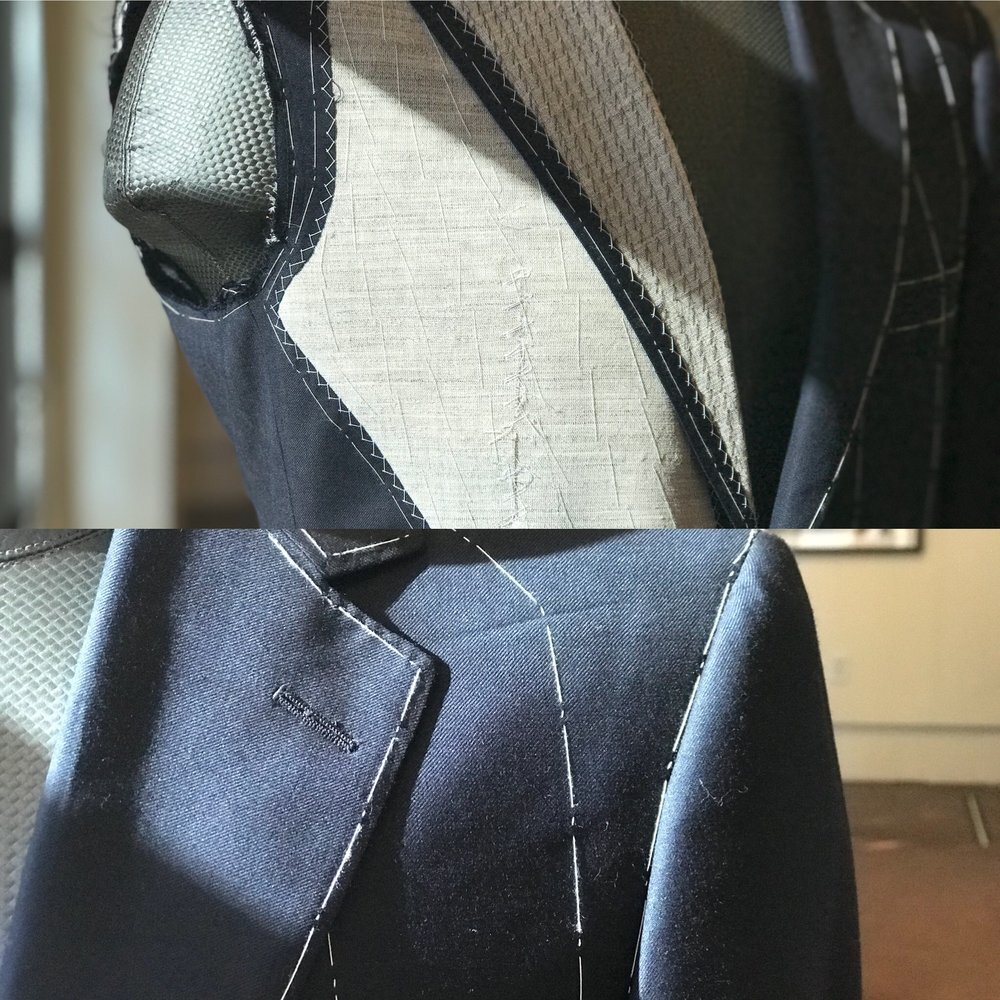Bespoke Tailor Perth: Customized Suits Made Just for You
Bespoke Tailor Perth: Customized Suits Made Just for You
Blog Article
Comprehending the Tailoring Refine: From Fabric Choice to Final Fitting for the Suitable Wardrobe
The tailoring process is a complex interplay of art and science, beginning with the critical decision of textile option and culminating in the precise changes of last fittings. Each material type brings distinct high qualities that affect not only the visual charm yet likewise the garment's long life and suitability for different celebrations.
Significance of Fabric Option
Picking the ideal textile is critical in the customizing process, as it directly affects the convenience, sturdiness, and overall visual of the last garment. The option of material sets the foundation for the garment's performance, functionality, and style. Various textiles have one-of-a-kind properties, such as breathability, stretch, and weight, which can significantly influence just how the garment drapes and fits the body.

A customized piece made from a suitable textile not only showcases craftsmanship yet likewise raises the user's confidence. Recognizing the nuances of textile option is extremely important for any tailoring endeavor. It guarantees that the end product not only fulfills the visual needs of the customer yet likewise aligns with useful requirements, thus attaining an unified balance between type and function in the tailored closet.
Sorts Of Fabrics and Their Uses
Understanding the various kinds of materials offered is crucial for making educated decisions during the customizing procedure. Each fabric has one-of-a-kind characteristics that determine its suitability for details garments and celebrations.
Cotton, known for its breathability and softness, is optimal for informal wear and summertime clothing. Its convenience permits it to be tailored into everything from shirts to gowns. Woollen, on the other hand, is favored for its warmth and structure, making it an exceptional choice for formal suits and outerwear. Its all-natural elasticity aids garments preserve form gradually.
Silk radiates high-end and is light-weight, making it ideal for eveningwear and delicate blouses; nevertheless, it needs mindful handling due to its frailty. Bed linen, with its textured finish, is a prominent option for warm climates, providing a crisp and ventilated feel, however it wrinkles easily, which may impact the garment's appearance.
Artificial fabrics, such as polyester and nylon, offer durability and resistance to wrinkles, making them suitable for everyday wear and active apparel. Understanding these material types and their residential properties enables for far better decision-making, guaranteeing that each customized piece not only fits well yet likewise lines up with the desired objective and celebration.
The Tailoring Methods Described
The art of tailoring depends on a variety of methods that change fabric into well-fitted garments. Central to this procedure is pattern drafting, where a tailor produces templates based upon the client's dimensions and wanted design. This preliminary action ensures that the garment will fit the user appropriately before any type of cutting occurs.
Once patterns are developed, cutting techniques come into play. Accuracy is vital as inaccuracies can lead to misfitting garments. Tailors typically use numerous cutting approaches, such as single-layer reducing for intricate layouts and multiple-layer reducing for performance on basic patterns.
Basting is one more vital technique, permitting dressmakers to momentarily stitch material assemble for a preliminary installation (wedding suits perth). This approach uses the chance to examine the drape and general silhouette prior to final sewing
Seaming techniques, including flat-felled joints and French seams, boost the garment's longevity and visual allure. Tailors additionally employ methods such as interfacing and padding to supply structure and form to particular areas, like collars and shoulders.
Last but not least, ending up techniques, including hemming and side finishing, ensure the garment's durability while supplying a polished look. Together, these strategies develop the backbone of effective customizing, leading to elegant, tailor-made clothing.

Suitable Modifications and Factors To Consider
After the preliminary tailoring techniques have been used and the garment is constructed, fitting modifications come to be extremely important to accomplishing the best fit. These changes resolve different facets of the garment, guaranteeing it contours to the user's physique and improves overall look.

The surge of pants is an additional critical factor; it must sit easily over the hips without triggering pain, enabling for ease of movement. Hemming sizes for both trousers and skirts need to mirror the wearer's favored design while appreciating percentages.
Additionally, attention should be custom suits perth provided to the back of the garment, making certain that there are no unattractive pulls or excess textile - tailor suits perth. Each adjustment ought to be meticulously considered, as also minor modifications can substantially influence the total fit and aesthetic of the tailored item, ultimately leading to a wardrobe that emanates self-confidence and class
Keeping Your Tailored Clothes
Correct upkeep of tailored garments is vital to protecting their fit and look gradually. To make certain longevity, regular cleansing is paramount. Always adhere to the care tag guidelines, which might recommend dry cleaning for fragile textiles or maker cleaning for more resilient products. Stay clear of regular laundering, as this can use down the fabric and alter the garment's form.
Storage space is similarly vital; use padded hangers for coats and coats to preserve shoulder framework, and shop trousers folded neatly or hung to avoid creasing. Protect garments from direct sunlight, which can discolor shades and damages fibers.
In addition, regular examinations for minor repair work can prevent larger concerns. Inspect for loose switches, fraying joints, or signs of moth damage, attending to these troubles immediately to preserve the garment's honesty.
Finally, take into consideration seasonal turning. Putting on customized items in small amounts allows fabrics to recoup, expanding their lifespan. By implementing these upkeep methods, you can make sure that your customized garments remain as pristine as the day you initially wore them, enhancing your optimal wardrobe for years to come.
Final Thought
The customizing process, including fabric choice, skilled strategies, and exact suitable adjustments, plays an essential role in producing garments that improve both convenience and style. Comprehending the value of maintenance expands the life of tailored garments, solidifying their worth in a well-curated wardrobe.
Report this page